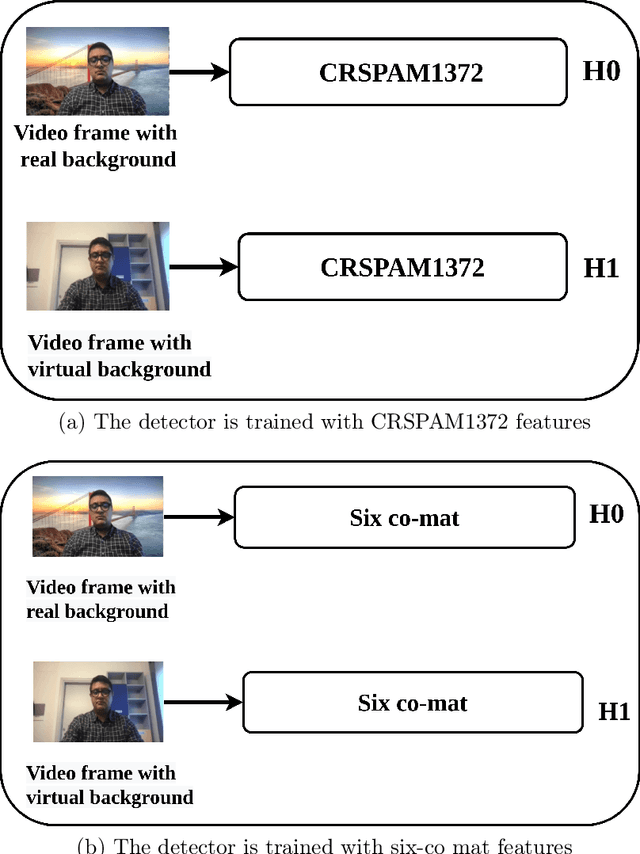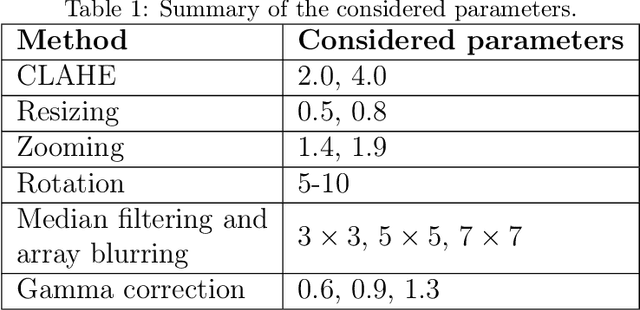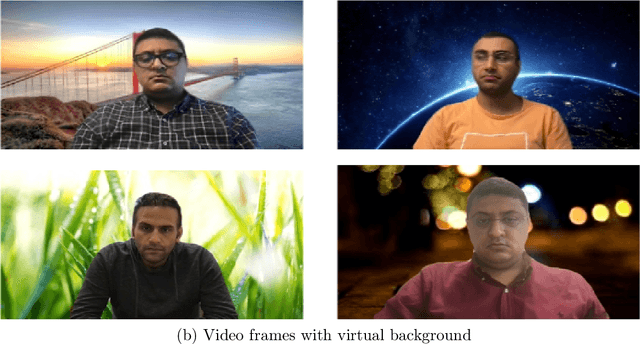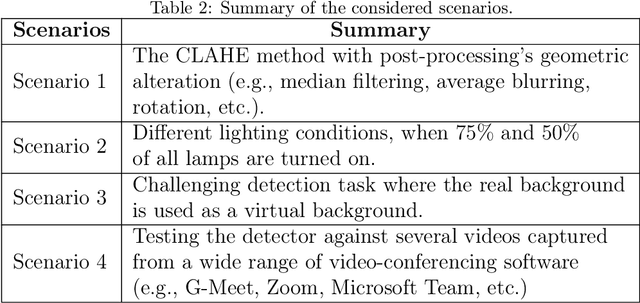Real or Virtual: A Video Conferencing Background Manipulation-Detection System
Paper and Code
Apr 25, 2022



Recently, the popularity and wide use of the last-generation video conferencing technologies created an exponential growth in its market size. Such technology allows participants in different geographic regions to have a virtual face-to-face meeting. Additionally, it enables users to employ a virtual background to conceal their own environment due to privacy concerns or to reduce distractions, particularly in professional settings. Nevertheless, in scenarios where the users should not hide their actual locations, they may mislead other participants by claiming their virtual background as a real one. Therefore, it is crucial to develop tools and strategies to detect the authenticity of the considered virtual background. In this paper, we present a detection strategy to distinguish between real and virtual video conferencing user backgrounds. We demonstrate that our detector is robust against two attack scenarios. The first scenario considers the case where the detector is unaware about the attacks and inn the second scenario, we make the detector aware of the adversarial attacks, which we refer to Adversarial Multimedia Forensics (i.e, the forensically-edited frames are included in the training set). Given the lack of publicly available dataset of virtual and real backgrounds for video conferencing, we created our own dataset and made them publicly available [1]. Then, we demonstrate the robustness of our detector against different adversarial attacks that the adversary considers. Ultimately, our detector's performance is significant against the CRSPAM1372 [2] features, and post-processing operations such as geometric transformations with different quality factors that the attacker may choose. Moreover, our performance results shows that we can perfectly identify a real from a virtual background with an accuracy of 99.80%.
 Add to Chrome
Add to Chrome Add to Firefox
Add to Firefox Add to Edge
Add to Edge